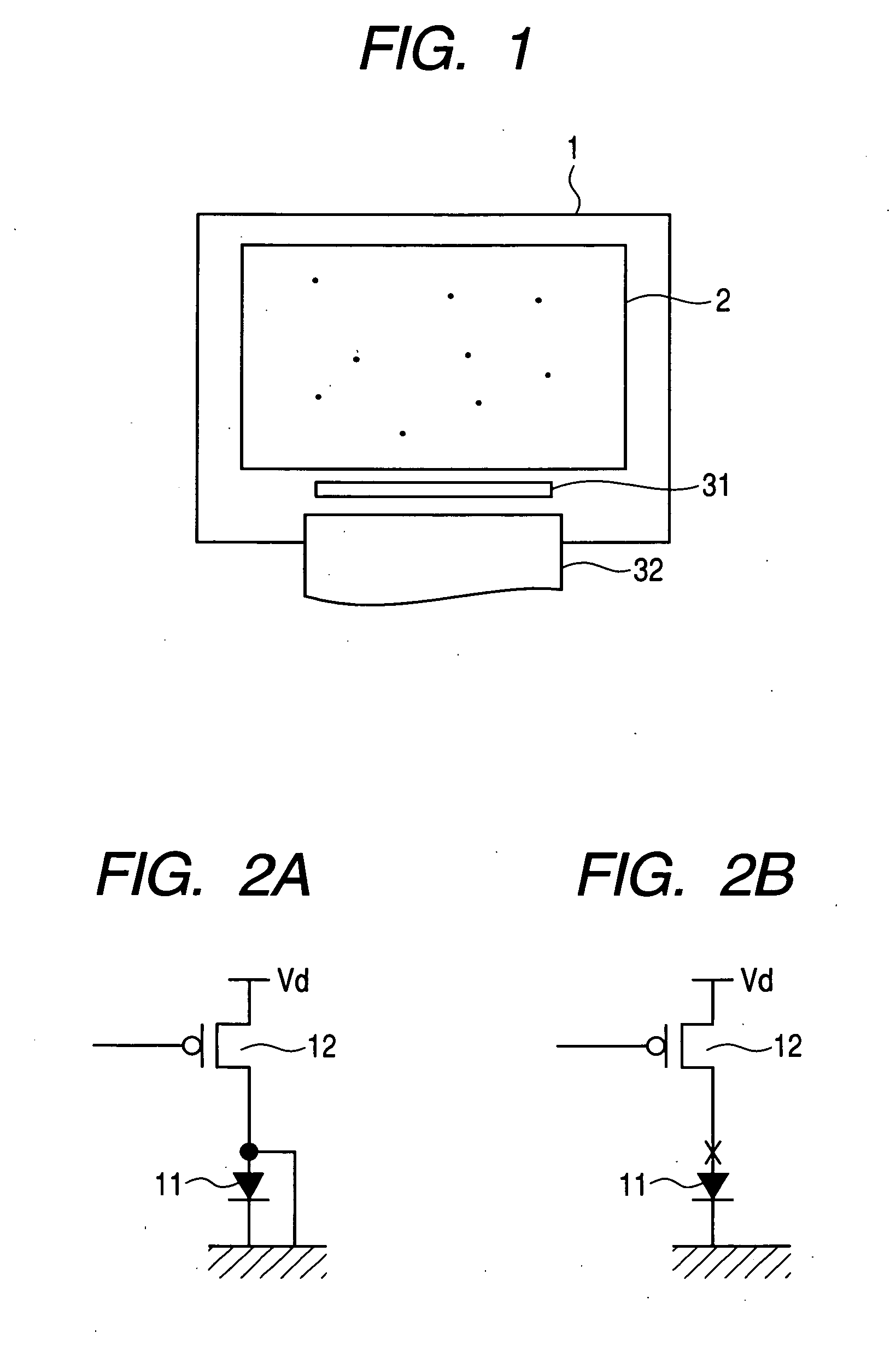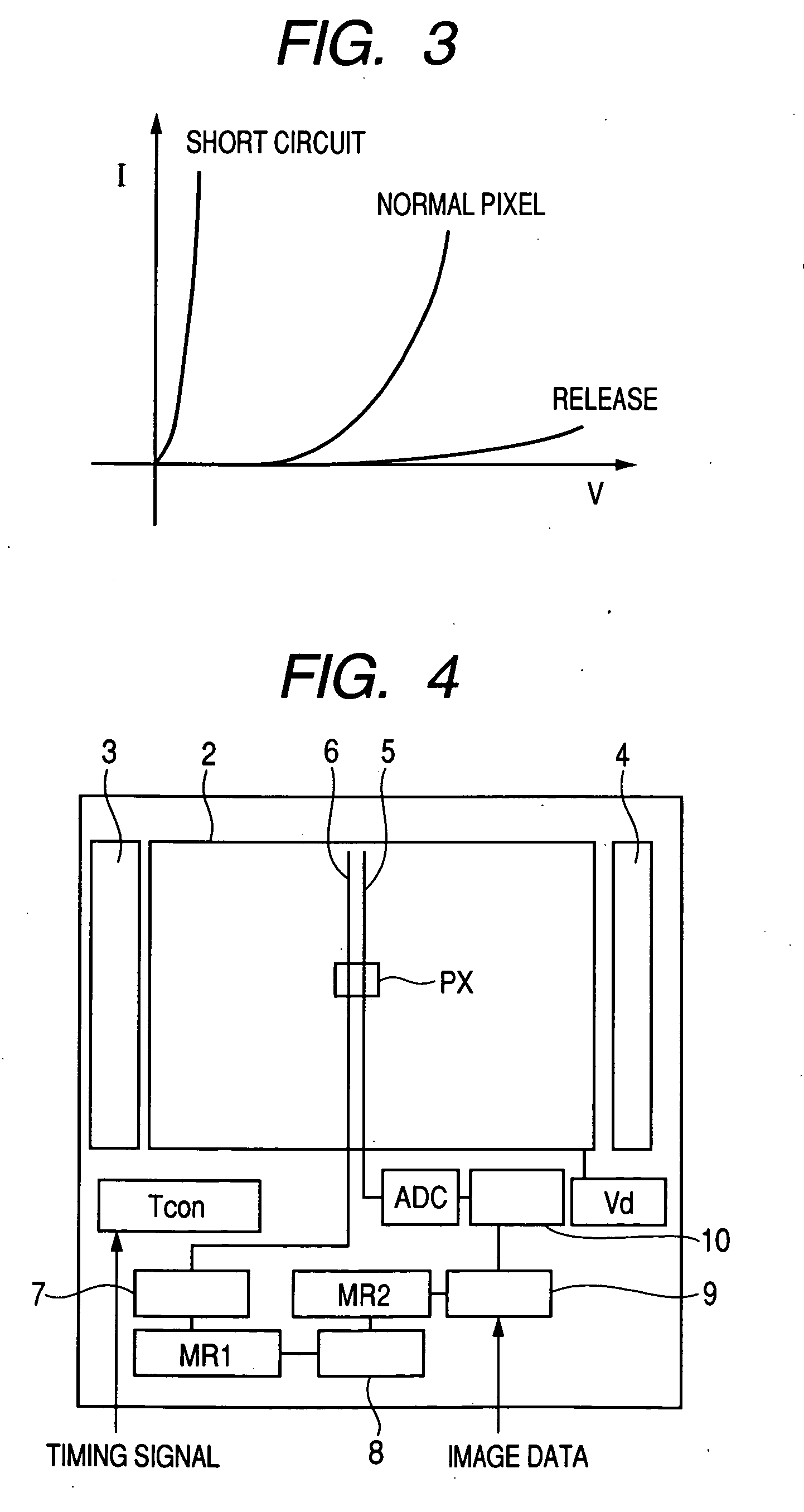Organic electroluminescence display
a technology of electroluminescence display and organic material, applied in the direction of instruments, static indicating devices, etc., can solve the problems of inability to perform appropriate feedback to image data, meaningless feedback, etc., and achieve the effect of eliminating line memory
- Summary
- Abstract
- Description
- Claims
- Application Information
AI Technical Summary
Benefits of technology
Problems solved by technology
Method used
Image
Examples
first embodiment
[0049]FIG. 1 shows an example of an organic electroluminescence display unit according to the present invention. Referring to FIG. 1, a display area 2 is formed to occupy a major area of an organic electroluminescence display panel 1. A drive IC 31 for driving the organic electroluminescence display panel 1 is disposed below the screen. A flexible wiring substrate 32 is attached to the organic electroluminescence panel 1 further below the drive IC 31. External image signals, power supply and the like will be fed to the organic electroluminescence display panel 1 through the flexible wiring substrate 32. Generally, the flexible wiring substrate is folded to the rear of the organic electroluminescence display panel so as to be stored in the frame.
[0050]A large number of pixels PX are formed on the display area 2 shown in FIG. 1. All the pixels PX are not normal, and abnormal pixels exist as indicated by black points shown in FIG. 1. The aforementioned point denotes the portion where t...
second embodiment
[0079]In the first embodiment, the determination with respect to the burn-in of the pixel PX is made through the comparison between the pixel PX and the adjacent one. That is, the plate voltage of the OLED device 11 of the pixel to be measured is compared with that of the adjacent pixel. The aforementioned inspection, however, may cause the measurement error resulting from the comparison between the pixels to be accumulated.
[0080]In order to prevent the aforementioned error accumulation, the following process may be performed in the present embodiment. The organic electroluminescence display unit to which the present embodiment is applied has the same structure as the one shown in FIG. 10. The data of the respective pixels except those determined as being faulty by the failure determination unit 81 shown in FIG. 10 are transferred to the burn-in determination unit 82. In the present embodiment, the burn-in determination unit 82 generates the reference data serving as the reference o...
third embodiment
[0082]FIG. 13 shows an example of the organic electroluminescence display unit according to a third embodiment. In the embodiment, the process for detecting the data of the pixels PX on the detection line as the scanning line sequentially from the left as shown in FIG. 11 is the same as that of the first embodiment. In the present embodiment, the burn-in determination with respect to the pixel PX is performed through the comparison between the pixel PX and the data of the reference pixel rather than the comparison between the adjacent pixels.
[0083]In the embodiment, if the reference pixel is turned to be abnormal, all the correction data cannot be used. In order to overcome the aforementioned disadvantage, the reference pixel is also subjected to the periodic check whether or not it is maintained normal. For example, the normal range and the abnormal range for the reference data are predetermined as shown in FIG. 7. Then the process for eliminating the reference pixel determined as ...
PUM
 Login to View More
Login to View More Abstract
Description
Claims
Application Information
 Login to View More
Login to View More - R&D
- Intellectual Property
- Life Sciences
- Materials
- Tech Scout
- Unparalleled Data Quality
- Higher Quality Content
- 60% Fewer Hallucinations
Browse by: Latest US Patents, China's latest patents, Technical Efficacy Thesaurus, Application Domain, Technology Topic, Popular Technical Reports.
© 2025 PatSnap. All rights reserved.Legal|Privacy policy|Modern Slavery Act Transparency Statement|Sitemap|About US| Contact US: help@patsnap.com



